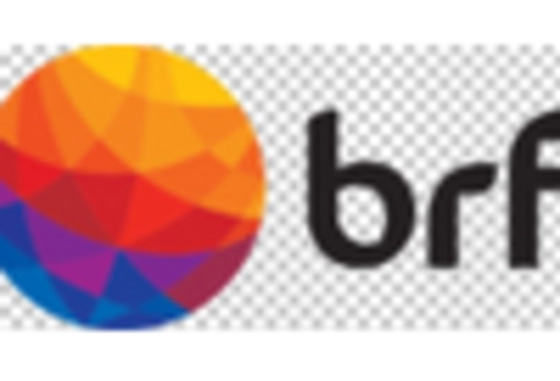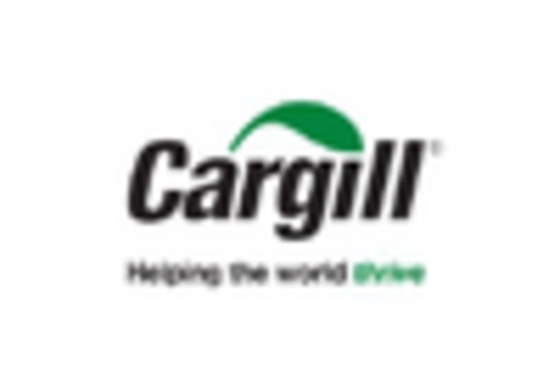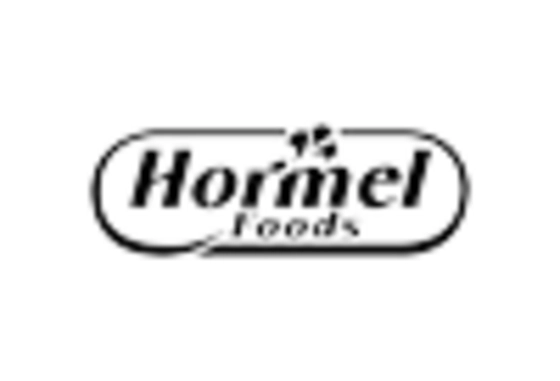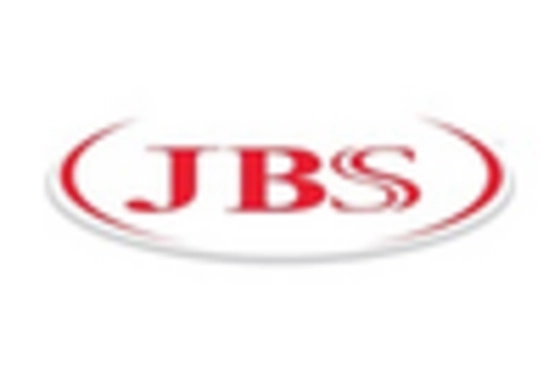The Animal Protein Market is currently characterized by a dynamic competitive landscape, driven by increasing consumer demand for protein-rich diets and a growing focus on sustainability. Major players such as JBS S.A. (Brazil), Tyson Foods, Inc. (US), and Cargill, Inc. (US) are strategically positioning themselves through innovation and regional expansion. JBS S.A. has been enhancing its product portfolio with plant-based alternatives, indicating a shift towards diversification. Tyson Foods, on the other hand, is focusing on digital transformation to optimize its supply chain and improve operational efficiency. Cargill, with its emphasis on sustainable sourcing, is also making strides in enhancing its market presence, collectively shaping a competitive environment that is increasingly focused on sustainability and technological advancement.
The business tactics employed by these companies reflect a concerted effort to localize manufacturing and optimize supply chains, which is crucial in a moderately fragmented market. The competitive structure is influenced by the collective actions of these key players, who are leveraging their scale and resources to enhance market penetration. This approach not only strengthens their individual positions but also contributes to a more resilient market structure, capable of responding to shifting consumer preferences and regulatory pressures.
In August 2025, Tyson Foods, Inc. (US) announced a partnership with a leading technology firm to implement AI-driven analytics in its production processes. This strategic move is expected to enhance operational efficiency and reduce waste, aligning with the growing trend of digitalization in the industry. The integration of AI technologies could potentially revolutionize how Tyson manages its supply chain, providing a competitive edge in a market that increasingly values efficiency and sustainability.
In September 2025, JBS S.A. (Brazil) launched a new line of organic meat products aimed at health-conscious consumers. This initiative not only diversifies its product offerings but also responds to the rising demand for organic and ethically sourced food. By tapping into this niche market, JBS is likely to strengthen its brand loyalty and attract a new customer base, further solidifying its position in the competitive landscape.
In October 2025, Cargill, Inc. (US) unveiled a new sustainability initiative focused on reducing greenhouse gas emissions across its supply chain. This initiative underscores Cargill's commitment to environmental stewardship and positions the company as a leader in sustainable practices within the animal protein sector. As consumers become more environmentally conscious, such initiatives may enhance Cargill's reputation and market share, reflecting a broader trend towards sustainability in the industry.
As of October 2025, the competitive trends in the Animal Protein Market are increasingly defined by digitalization, sustainability, and the integration of advanced technologies. Strategic alliances are becoming more prevalent, as companies recognize the need to collaborate in order to innovate and meet evolving consumer demands. Looking ahead, competitive differentiation is likely to shift from traditional price-based competition to a focus on innovation, technology adoption, and supply chain reliability, as companies strive to meet the challenges of a rapidly changing market.


















Leave a Comment